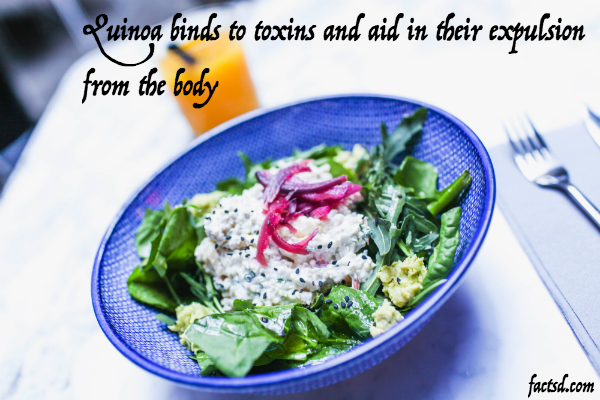
Quinoa nutrition facts: Interesting facts about Quinoa. Quinoa seeds are often dubbed as the food of future. With dwindling food production due to climate changes are forcing food scientists to look for alternative food sources which are nutritionally wholesome and can be grown in arid or barren lands.
Quinoa can be a very good substitute for cereals because it contains all the amino acids which are required by the body besides essential minerals and antioxidants. It can be labeled as “superfood” or a “supergrain”.Quinoa nutrition facts
Quinoa is a nutritious seed much akin to common grains like rice and wheat.
It is a member of the goosefoot family plant native to the highland plains of South-American Andes region
Its potential was recognized by the ancient Incas who believed that it contained the elixir of life and eating it will make them live long and stay healthy
It was the staple food off the Incas before the Spanish explorers forced them to stop cultivating it.
The scientific name of Quinua is Chenopodium quinoa.
Quinoa seeds are creamy and white colored.
Though it resembles staple grains but its seed is much akin to other dicotyledonous seed like gram or pea.
The fat contents is less than oil seeds and hence it is treated as any other staple grain.
The plant can grow up to a height of 3 to 6 feet.
It prefers neutral PH and sandy soil but can survive in salty as well as alkaline soils.
Nutrition facts quinoa
Its hardy nature made it a chief crop cultivated in the highlands of Bolivia, Chile, Peru and Ecuador since ancient times
The plant starts flowering in July and seeds are formed from August through September
The seeds are like amaranth seeds and could be colored white, gray, and pink, brown depending on the species.
The outer seed cover contains bitter tasting saponins which must be removed before eating.
Quinoa has spiked interest of food scientists because it can sustain in stressful conditions and contains a well balanced protein, fat and minerals in the right proportion and it will be an ideal crop in famine prone regions.
100 g quinoa seeds provide 368 calories which is comparable with other cereals like…
The post Quinoa Nutrition Facts – 39 Interesting Nutrition Facts About Quinoa appeared first on FeedBox.